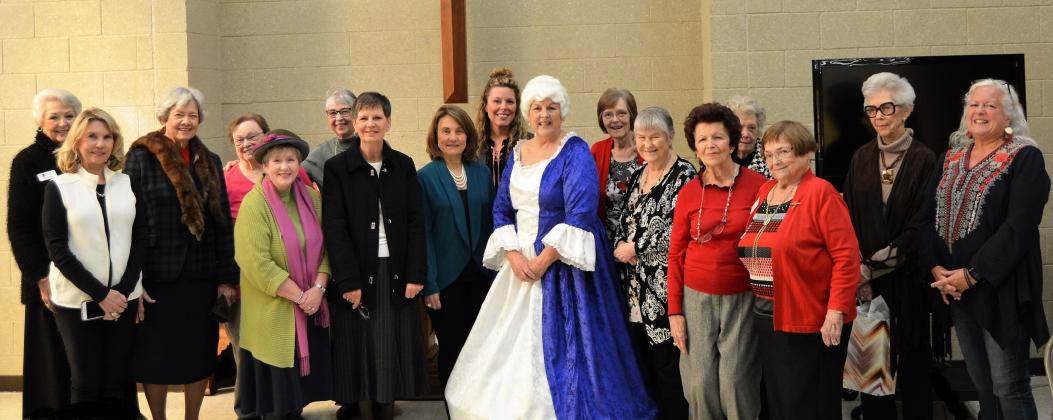DAR program features facts about tea, teatime, Boston tea party
The Robert Raines Chapter of the National Society of the Daughters of the American Revolution received a lesson from “Martha Washington” about tea at its Nov. 16 lunch meeting. This November marks the 246th anniversary of the 1773 Boston Tea Party.
Dressed in period garb, DAR State Regent Kathy Cave Wells shared the origins of tea, its popularity with colonists until it became the symbol for taxation without representation, the nuances of British “teatime” and interesting facts about tea consumption.
Tea, a choice east and west
According to Wells, the Chinese brought tea to Japan in the eighth century, but it was the Portuguese and Arabs in the mid-1500s who introduced tea to Europe. In fact, the Russian aristocracy was enjoying its version of teatime well before the English had their afternoon, high and low tea.
Americans have Dutch director-general Peter Stuyvesant to thank for bringing tea to New Amsterdam, renamed New York after acquisition by the British. In fact, the colonists consumed more tea than the English, a fact not lost on the Brits, and as a staple of trade between the colonies and England it was heavily taxed. The colonists initially responded by smuggling tea and adopting herbal teas from the Indians. The East India Company, a major provider of tea, pressured Parliament to act.
Tea, symbol of protest
The perfect storm was brewing as England increased taxes on newspapers, docking papers, legal documents and tavern and marriage licenses as a way to finance its debt from the French Indian War and the colonists reacted in a number of ways. Colonial women pledged publicly not to drink tea. To put a dent in the East India Company trade, tea was purchased from the Dutch. Since the colonists consumed an estimated 1,200,000 pounds of tea a year, the boycott was not well received.
While the most famous “tea party” associated with the American Revolution was in Boston, harbors in Charleston, Philadelphia, New York, Princeton and some ports in Maryland, Maine and New Jersey were also sites of protesting taxation without representation. It was at this time coffee became the colonists’ beverage of choice.
Tea facts
Tea is grown 3,000-7,000 feet above sea level in more than 30 countries. South Carolina has the distinction of being the only state in the Unites States (in 1795) to have produced tea commercially, thanks to its introduction by the French to wealthy Charleston planters.
Tea is low in caffeine with about 40 milligrams per cup and remains an economical beverage. Prepared at home, tea cost less than 10 cents per serving for even the most expensive tea.
According to Wells, 80% of tea consumed by Americans is iced tea. While popularized at the 1904 World’s Fair in St. Louis, iced tea first appeared in the 1860s, and led to the invention of iced teaspoons, lemon forks and renaming the tall goblets in crystal sets to “iced tea” glasses.
Tea got a boost during prohibition as an alternative to alcoholic beverages but another example of how social and political events impact even the culinary palate is during World War II. The major sources of green tea were cut off from the United States, leaving Americans with tea from British-controlled India which produces black tea. By war’s end, Americans were drinking 99% black tea.
According to Wells, in 2018 Americans consumed more than 84 billion servings of tea, or more than 3.8 billion gallons of which 84% was black tea, 15% green tea with the small remainder being oolong, white and dark tea.

